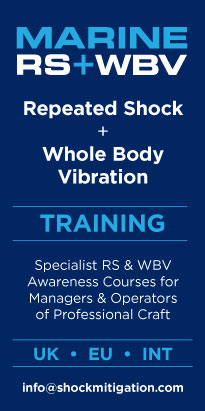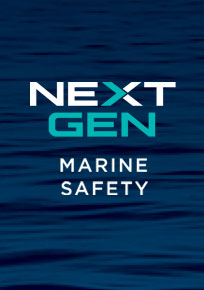A Global Perspective on Marine Shock Mitigation

05.04.2022

John Haynes - MD Shock Mitigation Workshop Lead
A challenge for the builders of next generation RIBs and high speed craft is delivering platforms that balance high performance with the physical demands on crew and passengers.
To enable a holistic approach to reducing injury, operators need to share lessons learned by other sectors - including coxswain training, managing time and speed expectations for different vessels and improved passage planning.
EU and UK Vibration Directives recognise that fast boats can be a high risk means of transport. RS & WBV (Repeated Shock & Whole Body Vibration) can be damaging to helmsman, boat crew and their passengers. Acute and chronic injuries from operating at speed in waves include lower back and knee injuries.
The definition of shock mitigation is, 'to make a violent collision or impact less intense'. A shock mitigation strategy is essential for all craft that undertake open sea transits or operate in rough water. This includes rivers and estuaries with wind against tide conditions which form short, steep waves.
With the arrival of ‘unbreakable boats’ plus a surplus of engine power ‘man’ is often considered the weakest link. In recent years, academia and industry focus has mainly been on developing mechanical suspension Efforts now include improving seat cushion performance and reducing fatigue for occupants of lower speed vessels.
Hard decks can be an issue when people stand in one place. To reduce fatigue, cushion decking materials can be used when leaning posts or jockey style seating require feet on the deck. Even with high performance seating installed, people need to walk around the vessel to carry out onboard tasks or to embark.
Other areas requiring attention include fore-aft, lateral and vector forces for all types and speeds of vessels. Accelerometers are increasing being used to measure vibration and impact - then to quantify how much benefit different technologies can offer.
NEXT GEN Shock Mitigation Solutions Workshop 2020 >
NEXT GEN Shock Mitigation Workshops examine how groups around the world are taking different approaches to solving these problems - and how these efforts can be utilized by organisations to reduce the risk of injury for people working on boats.
For future events and further information please contact:
Claire Donnelly +44 (0)7709 675258
Email claire@shockmitigation.com
All images are copyright Shock Mitigation 2025 unless otherwise stated.
This does not exclude the owner's assertion of copyright over the material.











